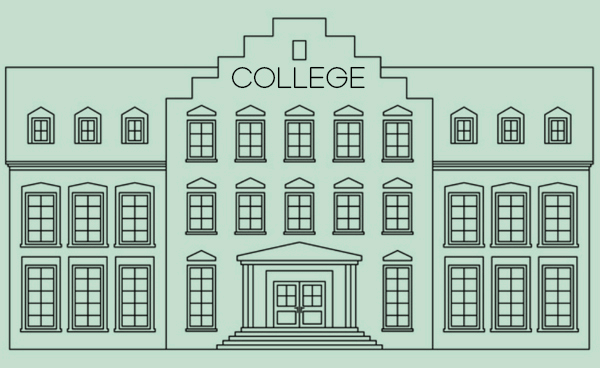HAIRDRESSING COLLEGE
QUALIFICATIONS EXPLAINED

NVQ, SVQ, VRQ - WHAT DOES IT ALL MEAN?
The nationally recognised National Vocational Qualification (NVQ – or SVQ, if you’re studying in Scotland), is the original vocational route into hairdressing. The Vocationally Related Qualification (VRQ) came about to mirror the NVQ subjects but with fewer restrictions in place, making it a popular choice for those starting with fewer skills and less confidence.
The main differences between NVQs and VRQs are the number of assessments that you have to carry out to achieve the qualification. There are more assessments with the NVQ route, and they must all be carried out on a range of live models within commercially acceptable timings; with VRQs there are fewer restrictions on models and timings, although assessments must still be within reasonable commercial timings.
The introduction of the VRQ qualification initially introduced a stepping stone to the learner journey. So if you completed an NVQ Level 2 but weren’t quite ready for the NVQ Level 3, you could complete a VRQ Level 3 before completing an NVQ level 3. However, over the last few years funding of post-16 courses has changed and you are now only funded for your first Level 2 or 3, which means that college students tend to take either the VRQ or NVQ route.
The nationally recognised National Vocational Qualification (NVQ – or SVQ, if you’re studying in Scotland), is the original vocational route into hairdressing. The Vocationally Related Qualification (VRQ) came about to mirror the NVQ subjects but with fewer restrictions in place, making it a popular choice for those starting with fewer skills and less confidence.
The main differences between NVQs and VRQs are the number of assessments that you have to carry out to achieve the qualification. There are more assessments with the NVQ route, and they must all be carried out on a range of live models within commercially acceptable timings; with VRQs there are fewer restrictions on models and timings, although assessments must still be within reasonable commercial timings.
The introduction of the VRQ qualification initially introduced a stepping stone to the learner journey. So if you completed an NVQ Level 2 but weren’t quite ready for the NVQ Level 3, you could complete a VRQ Level 3 before completing an NVQ level 3. However, over the last few years funding of post-16 courses has changed and you are now only funded for your first Level 2 or 3, which means that college students tend to take either the VRQ or NVQ route.
Hairdressing NVQ/SVQ and VRQs - what to expect from each level:
TECHNICAL QUALIFICATIONS
And what about Technical qualifications? The government has decided to bring vocational education in line with academic education, resulting in an overhaul of qualifications. It started with apprenticeships, which now work to Standards that result in an End-Point Assessment.
You would start with a Level 2 Technical Certificate and there are a range of options tailored to Hairdressing, Barbering, Cutting & Styling and Colour. These too have an End-Point Assessment, plus an end-of-year exam, unlike NVQs/VRQs, which are continually assessed in both practical and theory throughout the year. Technical qualifications also have mandatory employer involvement, which means students have salon placements or engage in workshops.
If you’re studying for a Technical qualification you must pass all elements of the course to qualify, which include Synoptic practical assessments, a theory exam, employer engagement and any optional units. If you fail the theory exam there’s a re-sit window in May; if you fail the Synoptic assignment you must wait until the autumn.
Upon completion of your Level 2 Technical Certificate, you can either seek employment or progress onto a Level 3 Technical Diploma specialising in either Hairdressing or Barbering. Level 3 focuses on the technical skills and advanced knowledge required for more senior hairdressing roles.
And what about Technical qualifications? The government has decided to bring vocational education in line with academic education, resulting in an overhaul of qualifications. It started with apprenticeships, which now work to Standards that result in an End-Point Assessment.
You would start with a Level 2 Technical Certificate and there are a range of options tailored to Hairdressing, Barbering, Cutting & Styling and Colour. These too have an End-Point Assessment, plus an end-of-year exam, unlike NVQs/VRQs, which are continually assessed in both practical and theory throughout the year. Technical qualifications also have mandatory employer involvement, which means students have salon placements or engage in workshops.
If you’re studying for a Technical qualification you must pass all elements of the course to qualify, which include Synoptic practical assessments, a theory exam, employer engagement and any optional units. If you fail the theory exam there’s a re-sit window in May; if you fail the Synoptic assignment you must wait until the autumn.
Upon completion of your Level 2 Technical Certificate, you can either seek employment or progress onto a Level 3 Technical Diploma specialising in either Hairdressing or Barbering. Level 3 focuses on the technical skills and advanced knowledge required for more senior hairdressing roles.
Check these out: